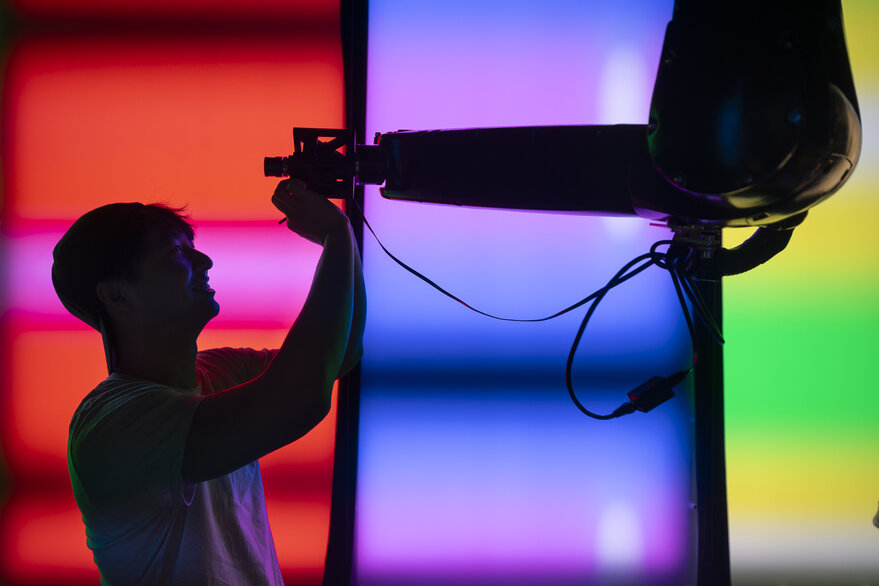LAS VEGAS – Space organizations are continuing to identify promising applications of artificial intelligence, according to speakers at the AIAA ASCEND conference here.
At NASA, for example, AI helps aggregate complex datasets from various Earth-observation sensors and illustrate the data through modeling in ways that are “intuitively clear,” said David Salvagnini, NASA chief artificial intelligence officer and chief data officer. “A powerful use case is the ability to build a foundation model that’s tailored to dealing with the multidimensional aspects of understanding the Earth.”
In addition, AI tools are helping NASA compare massive datasets collected during decades-long exploration missions with current models to derive new scientific findings.
“We were able to discover exoplanets that were previously undiscovered,” Salvagnini said.
Physics + AI
Slingshot Aerospace, meanwhile, is exploring ways to combine AI with existing physics-based modeling. If a satellite operator is trying to achieve a specific goal, it must consider a satellite’s physical capabilities as well as available onboard resources.
“How do I leverage AI to give me courses of action that are informed by the physics under the hood?” asked Belinda Marchand, Slingshot chief science officer.
Similarly, can AI suggest evasive or defensive actions a satellite operator may want to take when confronted with a potential threat? And is it possible to expand the puzzle to cover multiple space-based and ground-based assets?
“Multiple courses of action might be available and the trades for each one might be provided by AI,” Marchand said.
For now, a human being remains in the loop.
“I don’t believe that we’re at the point that AI will completely drive those responses,” Marchand said. “It can certainly inform the responses.”
Power Constraints
Another potential AI application is helping operators manage the generation, storage and consumption of power onboard a satellite.
“It’s quite complex,” said Al Tadros, Redwire Space chief technology officer. “Oftentimes, you either need to have large margins or you have a constraint on operations.”
Particularly near the end of a satellite’s mission, there may be constraints on when and how often a specific payload can function.
“I think AI has a lot of potential in squeezing out more performance than we would traditionally have gotten out of systems,” Tadros said.
Garbage In
Still, panelists cited their AI- concerns.
AI models are only as good as the training data that feeds them. And information on various satellites and their capabilities is often proprietary or classified.
“AI is going to respond based on the information that you use to train it,” Marchand said. “If that information is incomplete or does not accurately represent the system, capabilities and constraints,” it isn’t very useful. As the saying goes, “garbage in, garbage out.”
Another potential problem is widespread use of AI tools by people not trained to use them.
“Do they understand where the AI is best suited to help enable them in some way?” Salvagnini asked. “Do they understand how to responsibly use the AI tool be able to get the outcome that they’re seeking? And then, of course, there’s a responsibility that’s incumbent upon the person who is using the AI to fact check.”
Additional impediments to space-based applications of AI are limited datasets. While it may seem like there are many images of objects in space, AI training requires much more data.
Redwire is working with Stanford University’s Center for AEroSpace Autonomy Research (CAESAR) to train models with synthetic data.
“We have good technical and engineering approaches to solving some of these challenges,” Tadros said.
Likewise, while spacecraft historically did not have powerful onboard processors, that is changing too.
“There are a lot of companies that are looking at the latest Nvidia, AMD, Qualcomm and other chips for space-tolerant architectures,” Tadros said. “I’m also encouraged that access to space has been more frequent and cost of access space has become more affordable, meaning that if we needed to improve spacecraft shielding or protection, we have that potential as well.”
